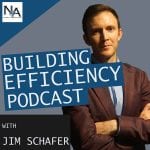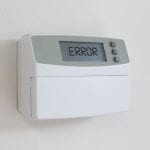How To – Energy Efficiency Upgrade Checklist
Thinking about upgrading your building’s lighting with energy efficient LEDs? Before you jump into the fray, we wanted to provide you with a quick roadmap outline of some of the most critical things to keep in mind when approaching an energy efficiency upgrade. What are the dos and don’ts of an energy efficiency project? Are there any pitfalls to keep an eye out for? And why should you even consider an energy efficiency upgrade in the first place? These, and many more, questions will be answered along the road. Buckle up and let’s get moving.
How to Plan for LED Lighting and Energy Efficiency Upgrade:
- Start Early:
- Starting early is a key contributing factor to ensuring you cover all your bases of a possible energy efficiency project. This includes ensuring you have the allotted budget, locations for upgrade identified, and an action plan in place long before an electrician steps on site to install a single fixture. Starting early gives you the time you need to make the right business decision for your organization and not be pressured into a sale.
- Research:
- Do your research. I mean this of course goes without saying, but many times you’d be surprised how little research is conducted when an end user decides to take on an energy efficiency project. Some key areas of research include fully understanding the applications you’re considering for an upgrade. For example, if you’re considering your warehouse and office areas for an upgrade the lighting applications between the two will differ greatly.
- Lighting Audit Requirements:
- As with every energy efficiency project conducting an extensive lighting audit of your existing lighting infrastructure if the first step in fully understanding what will be required in your project. But before jumping right into conducting the lighting audit, it’s highly recommended you first set down what you want to get out of your lighitng audit. Do you want to know the runtimes of equipment? Or how often an area is being used? Or how often the lights are on in a given area? All these questions require different elements of a lighting audit. Establish these goals first and your lighting audit will prove far more powerful in giving you the insight you need to make your energy efficiency project successful.
- Onsite Assessment:
- An onsite assessment is absolutely required for a lighting and energy efficiency audit. Now that you’ve baked out the goals that you want to achieve with your audit, it’s time to get on site and start the auditing process. Some key things to remember in your onsite assessment: 1. Make note of any items that will need attention from maintenance, such as broken lenses on fixtures or burnt out fixtures. 2. Take foot-candle readings of existing lighting. This will prove incredibly helpful when spec’ing your new lighting, ensuring your baseline needs are met.
- Know Your Building:
- Knowing your common usage patterns of your facility and identifying where you need the most help and/or improvement will be incredibly helpful in prioritizing the scope of your project. Perhaps you don’t have the budget to conduct a comprehensive facility-wide upgrade, but knowing that your office area, or exterior lighting is in critical need of an upgrade will ensure you address you most immediate needs.
- Cost Expectations:
- As part of your planning process, be sure to anticipate the estimated costs of the project and set multiple budget options so you have the flexibility needed to possibly break up a project into phases.
- Utility Incentives?
- Does your area utility provide and rebates or on-bill financing for energy efficiency upgrades? If they do you’ll want to ensure you research these options to include them in the financing of your energy efficiency project.
- Top 3 Picks
- Investigate between 4-5 installing contractor companies within your area and choose your top three contractors to solicit bids from.
- Collect Bids
- Put out a request for proposal (RFP) to your top three contractor choices. Be sure to set deadlines and specific guidelines on how you would like the project to be bid.
- Questions.
- Be sure to fully understand your unique needs and who can provide the best service for you, ensuring your project goals are met and budgets are kept in line.
- Try Before You Buy
- If possible, ask for a sample of the fixture that’s been selected to see if it will meet your expectations and needs of building occupants. The last thing you want to do is to install a warehouse or office full of brand-new LEDs to only learn that the fixture you picked has a horrible glare that impedes productivity and comfort.
- Read the Fine Print
- Don’t be pressured into simply signing a project contract without fully knowing how product failures will be handled, what the RMA process looks like, and how the new upgrade will be supported long-term.
- Hire Away:
- Now that you’ve done your due diligence it’s time to hire the company that best fits for your unique project needs.
- Let there be light!






Recent Comments